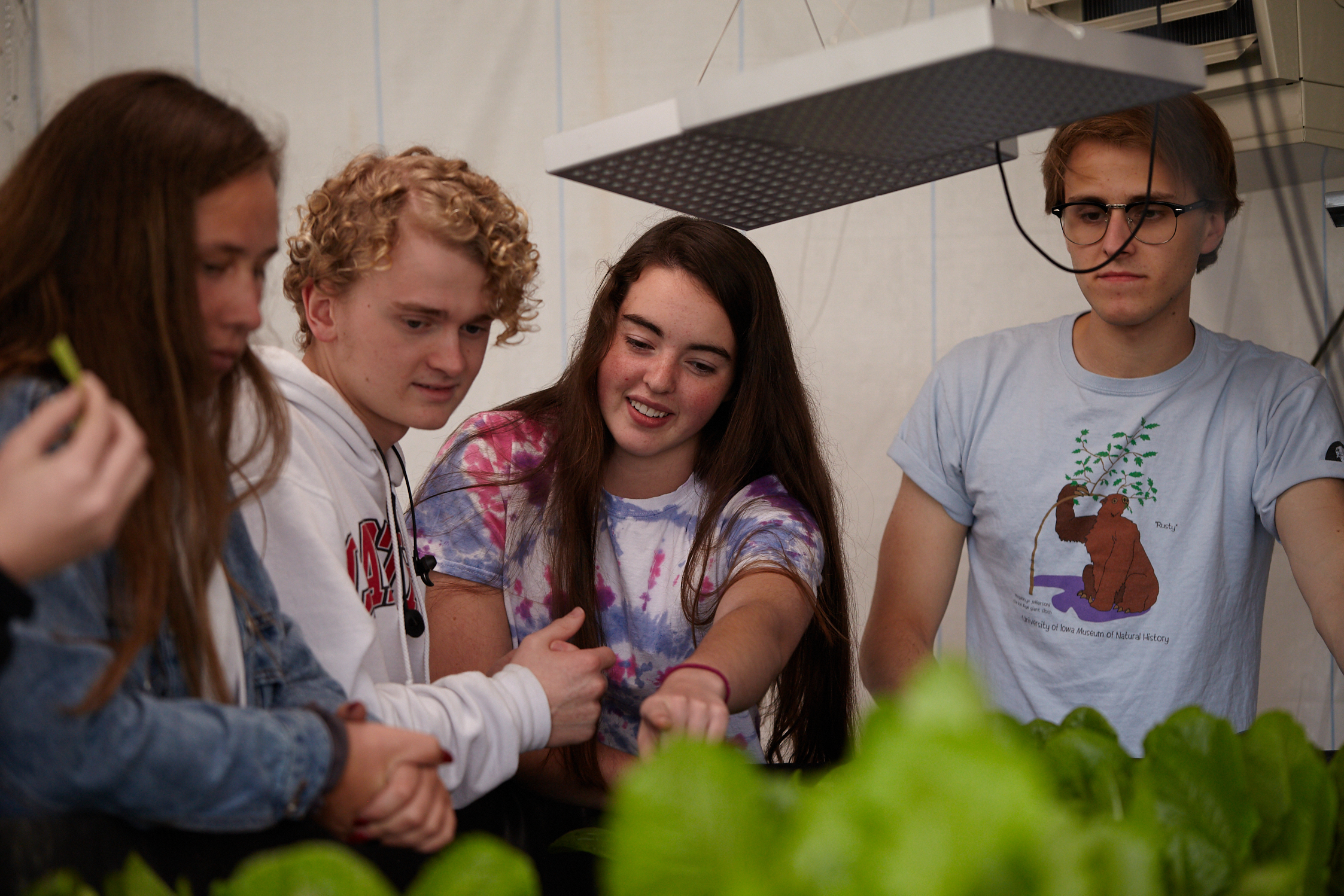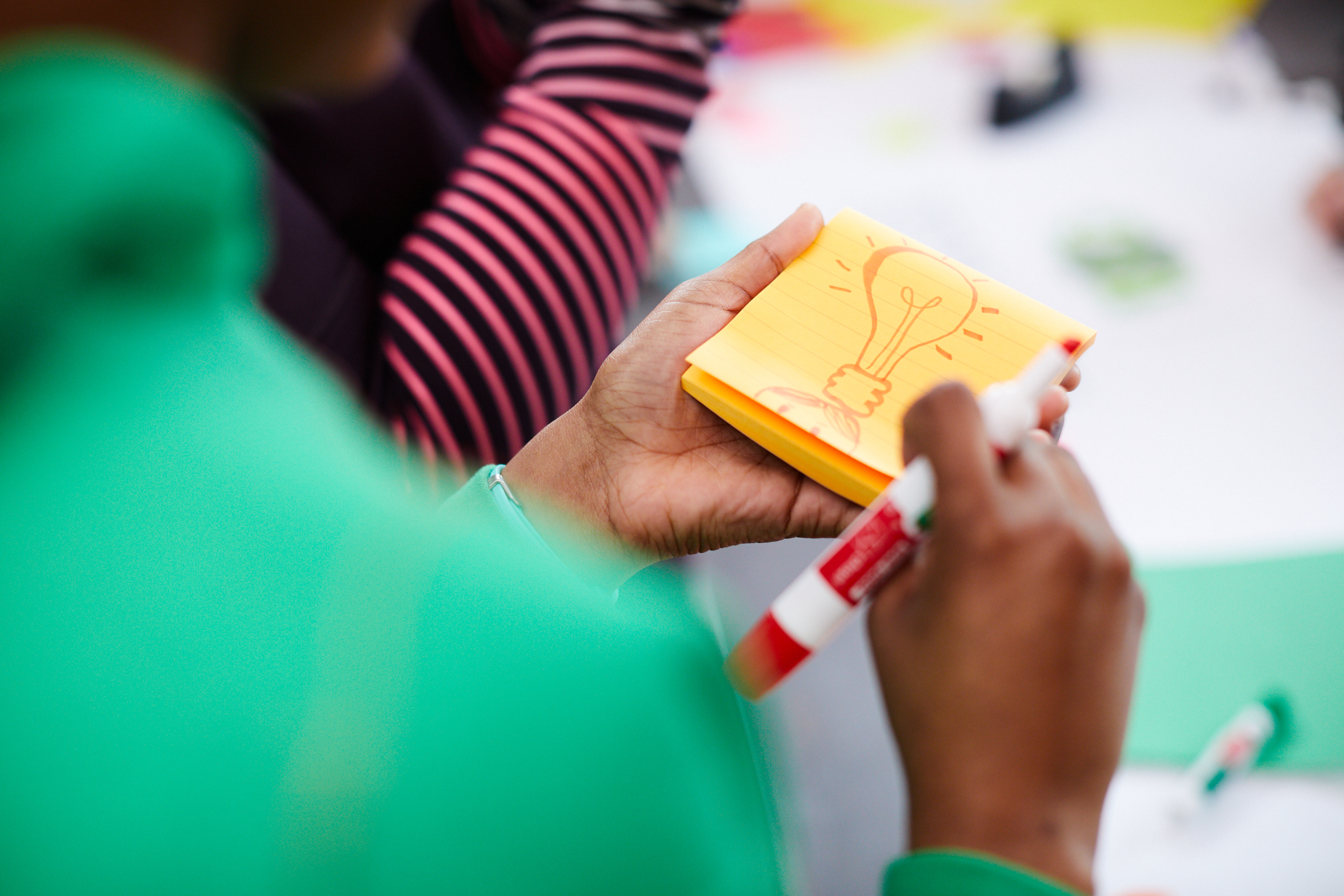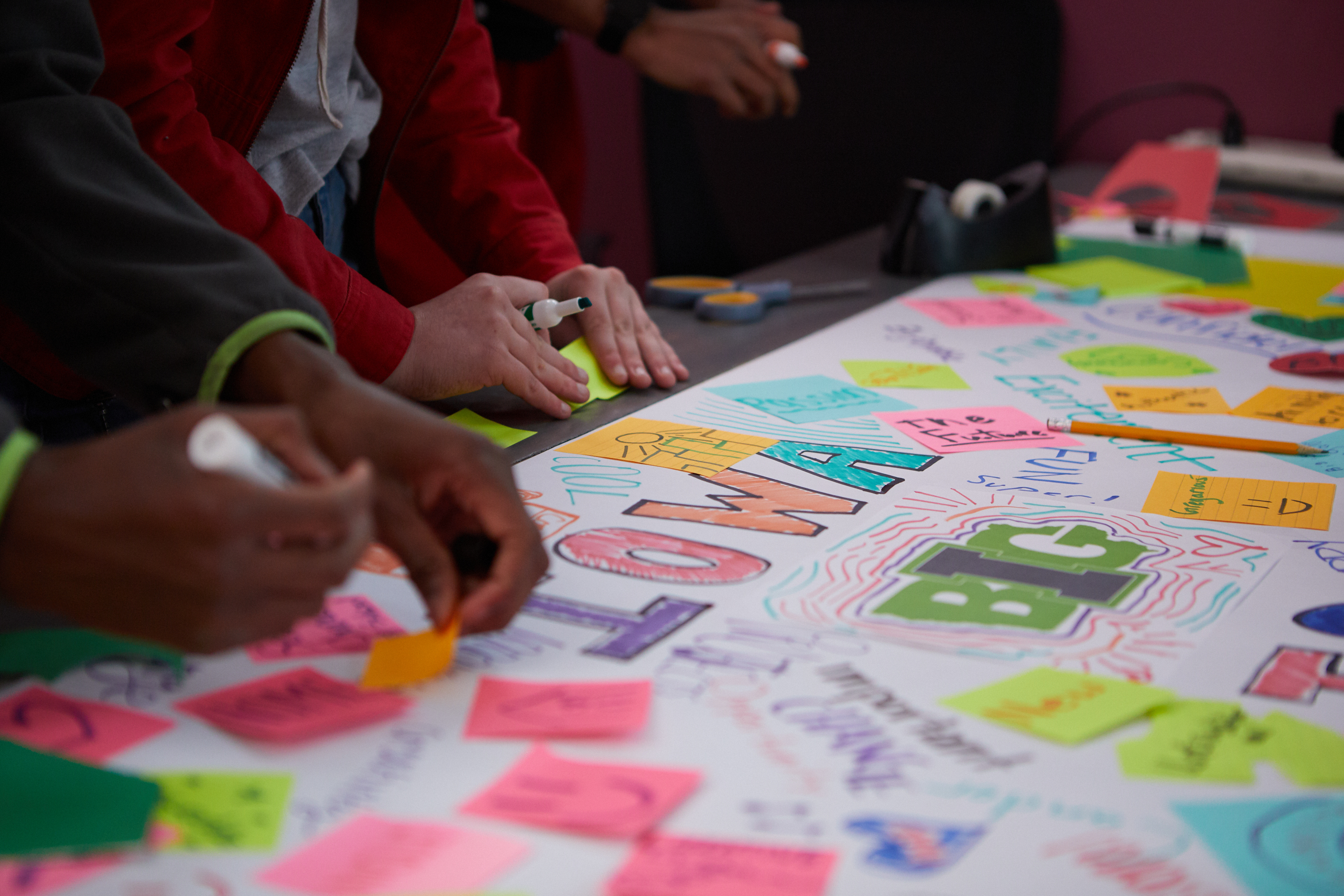“Has anyone acknowledged the fact that most of what kids are asked to do in high school is fake?”
This was a question put to Trace Pickering, Executive Director and Co-Founder of Iowa BIG, a high school initiative in Cedar Rapids, Iowa. In fact, the question came from a community member. The vision was to have students and community members working in partnership to solve real problems in the city, but before that could happen, Pickering invited business people and community members to come back to high school

“We sent 60 community leaders, representing the depth and breadth of our community ‘back to school’ in 2012,” said Pickering. “Each person spent a day as a high school student in one of several area high schools.”
Pickering and his team then brought the “adults in the room” back together to debrief about it. Three striking themes emerged, he recalled. First, the community saw that the kids were bored. (They were bored, too.) They also saw how hard the teachers worked to engage their students. Finally, community members saw how damaging the separation of subjects into different classes was, how it stripped learning of its context, creating a vicious cycle in which students became more bored and disengaged, and teachers then had to work even harder to reach them. This first-person experience with the education challenge facing the community was a springboard to innovation.
When community members were asked to design the high school they would want, based on their new experiences, time and again, three elements surfaced as critical: passion, projects, and community.
From this kernel of insight, Iowa BIG was conceptualized – by the community, for the community. And now, nine years on – and four years into the program’s XQ Superschool grant – Pickering reflected on the lessons he and his team have learned, and what he would tell his (slightly) younger self about community partnerships if he could go back in time.
Build Win-Win Community Partnerships
For community partnerships to work in education, they must be good for everyone involved –students, parents, educators, and the community members.
“Altruism has a rather short shelf-life,” said Pickering, “so the projects must be ‘real’ for the students and the partner.”

Pickering and his team quickly learned that giving students mission-critical projects did not create the kind of synergy needed to satisfy both sides of the equation, and were too risky for partners.
“This is about learning,” he said, “and there is no guarantee that projects will succeed.”
Instead, Iowa BIG now helps partners identify projects in their “like-to-have” pile – the ones that would help them out, but that they don’t have time to do themselves. However, they’re careful not to choose ones that can’t fail. Because, it turns out, failure is an important part of the learning process for Iowa BIG students.
“Kids need to learn how to benefit, learn, and grow from failures and missteps,” he said. “So we don’t try to make it a ‘perfect’ project.”
Another lesson Pickering shared was the need to help community members understand their role in the learning process more clearly. While projects should have clear goals and outcomes associated with them, they do not need to be designed to have an inevitable outcome. “It’s not about an algorithm or following a process sheet,” Pickering said.
Overcome the “I’m Not Sure About This” Moments
Iowa BIG approaches high school education in ways that were envisioned by the community. But that doesn’t mean that everyone “gets it” or that the entire Cedar Rapids public understands the model – or even knows about it.
“People wonder if the kids are ‘really learning’,” said Pickering. “Of course, they assume that ‘learning’ is passing a test or temporarily memorizing the periodic table or the timeline for WWII.”
When this comes up, the Iowa BIG team shows them how strong the students’ 21st century skills are, and points out the students’ enhanced soft skills – things that will help them succeed wherever their post-secondary paths take them. He also shared that the way the students talk about the community has helped win over doubters.

“Many kids here refer to Cedar Rapids as ‘Crapids’ – but not BIG kids. They see the amazing opportunities and people in the community, and that they can learn and make cool things happen here,” he said.
Since student agency and passion are integral to Iowa BIG’s design, another challenge is dealing with the bruised pride when students don’t choose a community member’s project. To help navigate this, Iowa BIG staff help partners develop projects with greater student appeal.
Perhaps most frustrating is that any student failure is taken as evidence that the program is flawed–despite the fact that the traditional system has its failures, too, but doesn’t suffer the same condemnation. To deal with this, Pickering tries to rearticulate the program’s design and philosophy.
“They Won’t Shut Up”
Parent comments reaffirm the model for Pickering.
“We get a lot of comments like this from parents: ‘Before BIG, when I asked what they did at school I got ‘nothing.’ Now, I can’t get them to shut up about their project!’’
Parents see their teenagers develop a newfound confidence through the program, becoming more comfortable interacting with adults, and gaining clarity about who they are and what they want.

Community members, too, are impressed with Iowa BIG’s students. One told Pickering that the student did a better job than they would have.
Though running any school program brings its share of challenges and unexpected events – like the COVID-19 pandemic–one thing is no longer a problem for Iowa Big.
“We have more project proposals from the community than we can possibly do, so we’re in a position to pick and choose these days. And that’s good news for our students.”